
Number 8 Squadron of the Royal Air Force last operated the Boeing E-3D Sentry AEW1 (AWACS) from RAF Waddington, Lincolnshire. As of 2020, the RAF AWACS fleet was made up of three Sentry AEW1s, down from seven originally ordered in the late 1980s. Pursuant to the 2021 defence review, the E-3D Sentry aircraft made its final flight in U.K. service in August 2021.

Number 39 Squadron is an inactive squadron of the Royal Air Force. It last operated the General Atomics MQ-9A Reaper from Creech AFB, Nevada, between January 2007 and July 2022. It had previously operated the English Electric Canberra PR.7, PR.9 and T.4 from RAF Marham, Norfolk, as No. 39 Squadron between July 1992 and July 2006.

No. 27 Squadron of the Royal Air Force operates the Boeing Chinook from RAF Odiham.

No. 14 Squadron of the Royal Air Force currently operates the Beechcraft Shadow R1 in the Intelligence, surveillance, target acquisition, and reconnaissance (ISTAR) role from RAF Waddington.

Number 47 Squadron is an inactive squadron of the Royal Air Force. Previously based at RAF Brize Norton, Oxfordshire, it last operated the Lockheed Martin Hercules C4/C5 between 2013 and 2023. It previously flew the Lockheed Hercules C.1/C.3 between 1968 and 2013.

No. 211 Squadron RAF was a squadron in the Royal Air Force active from 1917 to 1919 and from 1937 to 1946. In World War I it operated as a bomber and later a reconnaissance unit on the Western Front. In World War II it operated as a medium bomber unit in the Middle East and Far East and later as a strike fighter unit in the Far East, equipped with, successively, the Bristol Blenheim, the Bristol Beaufighter and de Havilland Mosquito.
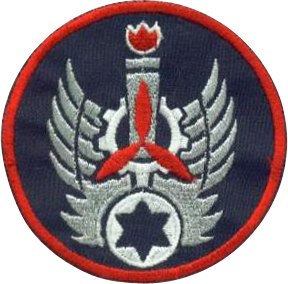
Tel Nof Israeli Air Force Base, also known as Air Force Base 8, is one of three principal airbases of the Israeli Air Force. It is located near Rehovot, Israel.
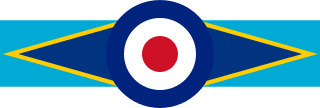
The name No. 68 Squadron has been used for two quite different units, only one of which was strictly a unit of the Royal Air Force. "No. 68 Squadron RFC" was for a time the official British military designation for No. 2 Squadron Australian Flying Corps.
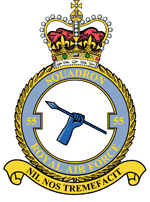
Number 55 Squadron was a flying squadron of the Royal Air Force (RAF). First formed in April 1917, the squadron saw action on the Western Front during the First World War. Based in the Middle East during the interwar period and the Second World War, No. 55 Squadron saw action over Iraq, Egypt, Libya and Italy. Between 1960 and 1993, the unit flew the Handley Page Victor. Initially on the Victor B.1A before becoming a tanker squadron in 1965 with the Victor B(K).1A/K.1/K.1A before converting to the Victor K.2 in 1975. Disbanding in October 1993, No. 55 Squadron were the last RAF unit to operate the Victor. Between 1996 and 2011, No. 55(Reserve) Squadron operated the Hawker Siddeley Dominie T.1 from RAF Cranwell, Lincolnshire, helping to train navigators for the RAF.
No. 104 Squadron RAF is a former squadron of the British Royal Air Force.
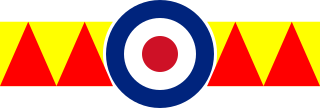
No. 604 Squadron RAF was a squadron of the Royal Air Force noted for its pioneering role the development of radar-controlled night-fighter operations. The squadron was established in March 1930 at RAF Hendon as a day-bomber squadron of the Royal Auxiliary Air Force. In July 1934, the squadron transitioned to two-seat fighters. Shortly after the commencement of World War II in 1939, the squadron was reassigned to a night-fighter role.

No. 223 Squadron RAF was a squadron of the Royal Air Force. Originally formed as part of the Royal Naval Air Service (RNAS), the Squadron flew in both World Wars.

No. 219 Squadron of the Royal Air Force was founded in 1918 and disbanded in 1957 after four separate periods of service. During the First World War it served as a coastal defence unit, and through most of the Second World War and the 1950s it operated as a night fighter air defence squadron. Three commanders of the squadron went on to be Chiefs of the Air Staff, two of the RAF and one of the Royal Pakistani Air Force.
No. 248 Squadron was a squadron of the Royal Air Force, active immediately after World War I, and again during World War II.
No. 107 Squadron RAF was a Royal Flying Corps bomber unit formed during the First World War. It was reformed in the Royal Air Force during the Second World War and was operational during the Cold War on Thor Intermediate Range Ballistic Missiles.
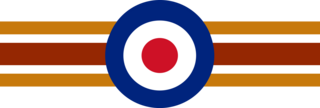
Number 125 (Newfoundland) Squadron was a Royal Air Force squadron active during World War II and briefly in the mid-1950s. Throughout its service the squadron primarily operated night fighters.
No. 114 Squadron was a squadron of the British Royal Air Force. It was first formed in India during the First World War, serving as a light bomber squadron during the Second World War and as a transport squadron post-war. It was last disbanded in 1971.
No. 252 Squadron RAF was a Royal Air Force (RAF) squadron that formed as a bomber unit in World War I and re-formed as part of RAF Coastal Command in World War II.

No. 255 Squadron RAF was a Royal Air Force Squadron formed as an anti-submarine unit in First World War and a night-fighter unit in Second World War. The First World War squadron was formed from former Royal Naval Air Service coastal flights and was responsible for coastal anti-submarine patrols. It was disbanded after the war.















